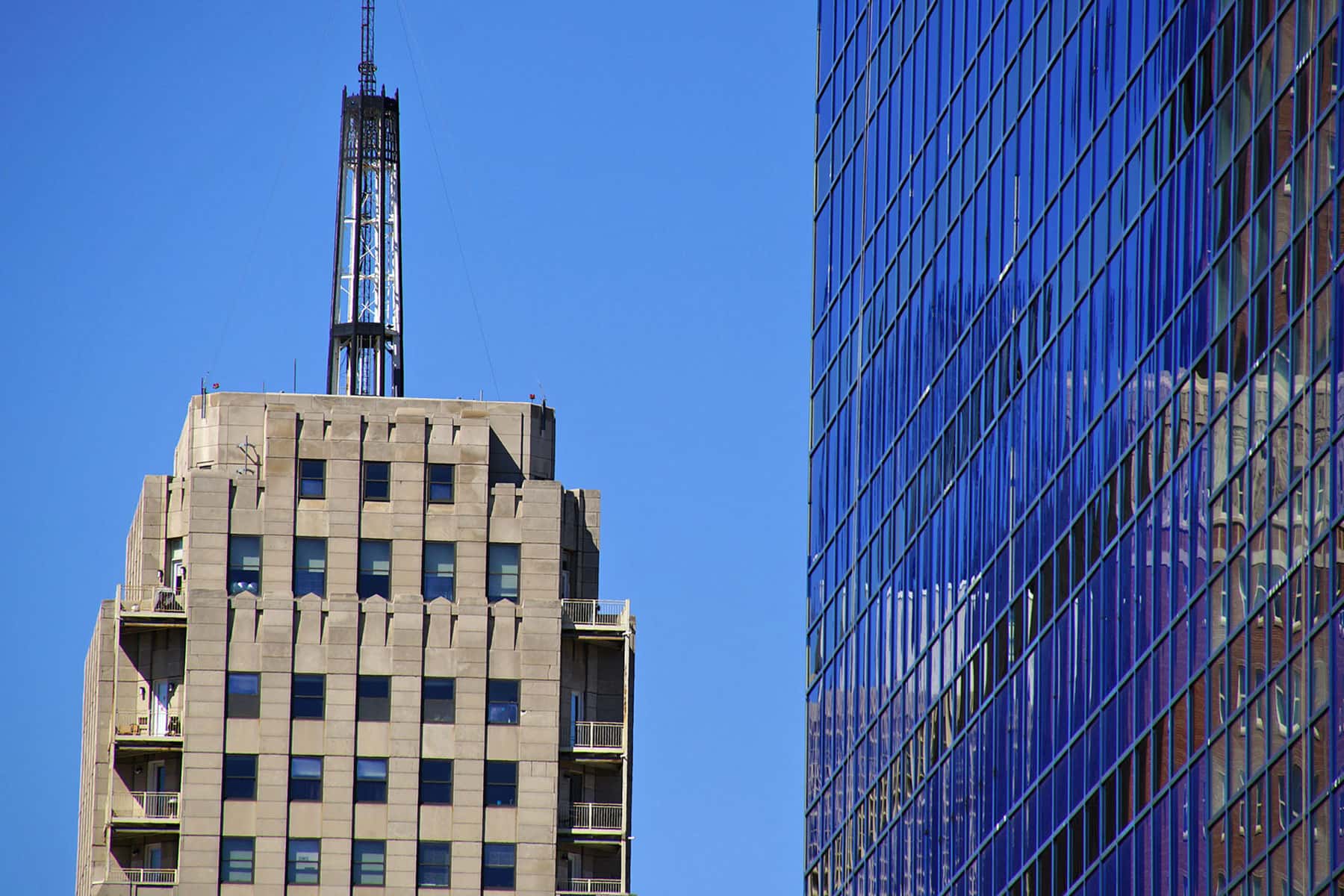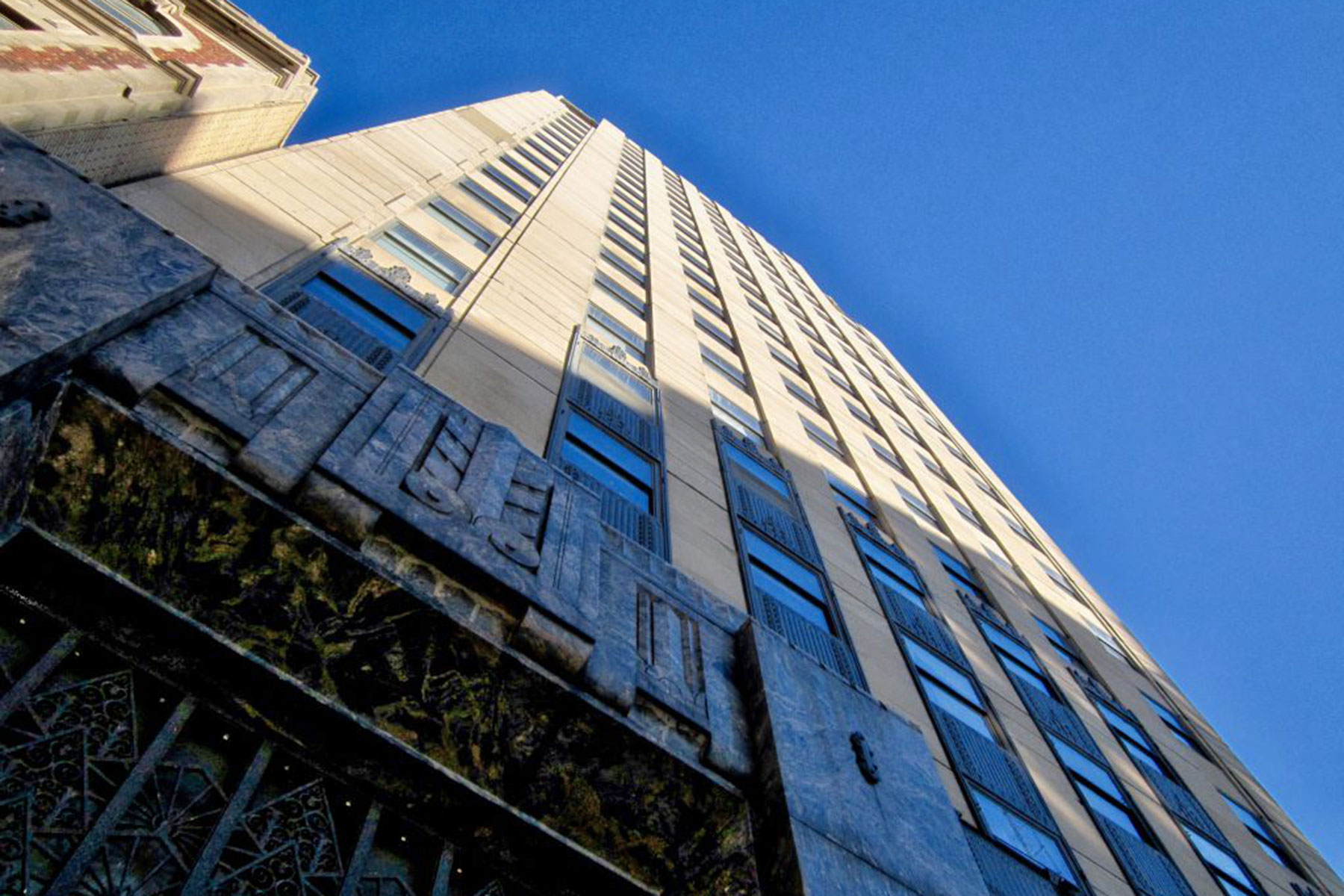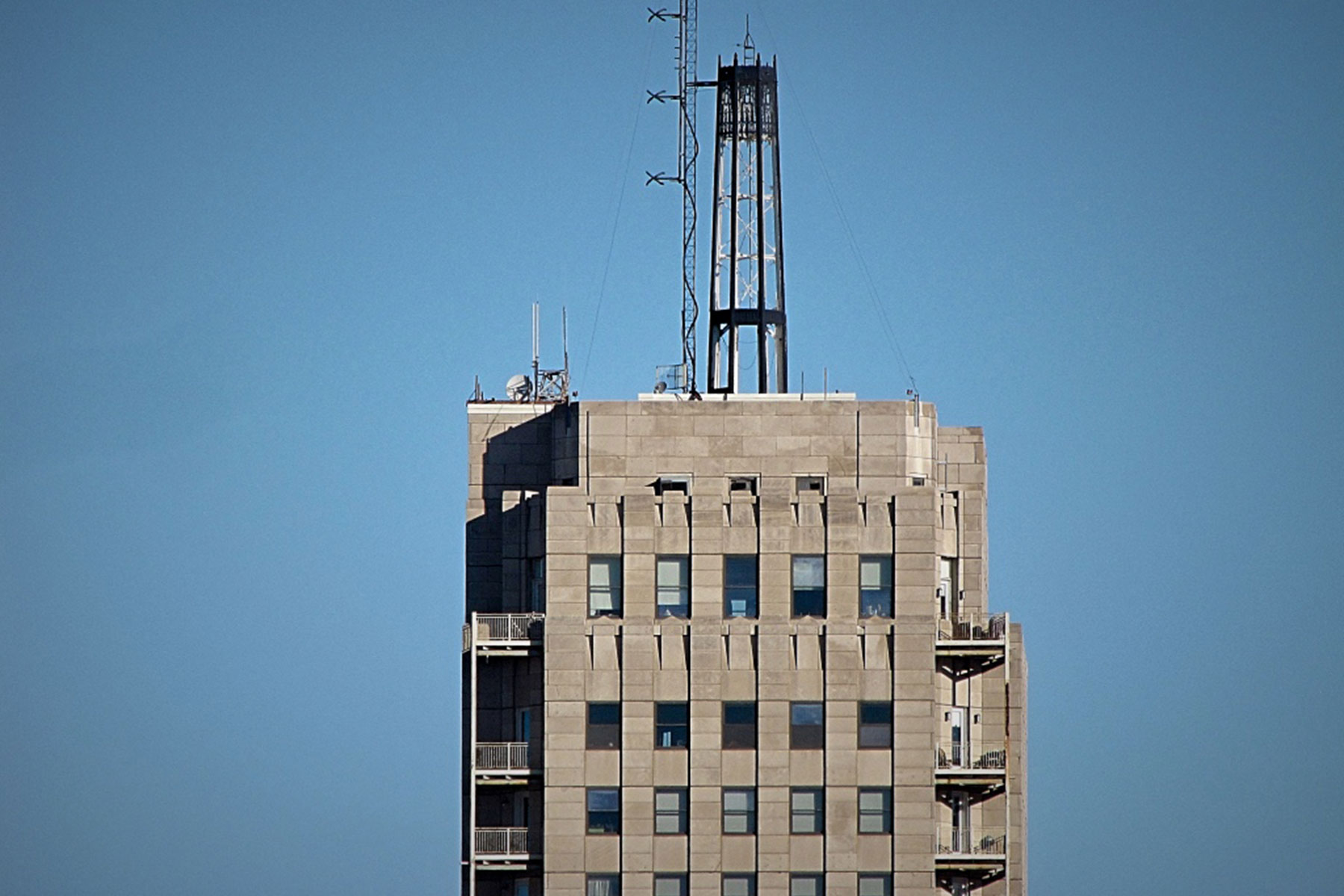
At 22 stories, the Wisconsin Tower was the second tallest in the city when completed in 1930.
The developers of The Couture, a 44-story skyscraper planned for Milwaukee’s lakefront, included a stop for the soon-to-be-built streetcar system. The developers of the 22-story Wisconsin Tower (originally the Mariner Tower), built 88 years ago at 606 W. Wisconsin Ave., would have laughed at that. Streetcars were nothing special in 1930, they already had plenty of them rumbling past their doors. After all, the city’s first electric streetcar line opened in 1890.
Instead, in drawing up plans in the late 1920s The Wisconsin Tower builders pinned their hopes on the latest development in transportation – airships. With a dirigible mooring mast on the roof, 280 feet above the street it was just a matter of time before Zeppelins linked Milwaukee, via this very building, to the major cities of the world.
It’s a good story, but is it true? In 2006, a writer for the Milwaukee Journal Sentinel researched the matter and even examined the 35-foot steel “mooring mast” on the tower’s roof. He found no evidence of an airship dock. (The rooftop structure is mostly decorative. Originally encased in glass, it was illuminated at night.)
The Wisconsin Tower Condominium Resident’s Handbook sounds a similar note, “Although there has been speculation that the steel tower’s original purpose was for blimp landings, there is no proof.”
But an airship mooring tower on a circa-1930 building is not impossible. New York’s 102-story Empire State Building, built at about the same time, had rooftop mooring facilities. The 1929 Thomas Jefferson Hotel in Birmingham, Alabama, still retains its mooring mast. There’s even a ticket office and waiting room atop Cleveland’s Huntington Building, built in 1924.
Airships docked by coupling to a mooring tower using a linkage at the tip of the craft’s nose, secure but free to pivot as the wind shifted. Passenger access was via drop-down stairs from the nose.
Of the three buildings, only the Empire State Building mooring mast was ever used, and the single successful mooring (by a small blimp) required white-knuckle maneuvering. For its part, the Zeppelin company wanted nothing to do with the concept.
According to a 2010 article in the New York Times, “Dr. Hugo Eckener, the commander of the Graf Zeppelin and the world’s expert on dirigibles, said flatly that the Empire State project was not practical. Zeppelin landings required scores of ground crewmen, retaining ropes fore and aft, and even then landings were sometimes dicey.”
The Graf Zeppelin was 800 feet long and very, very delicate, being made mostly of millions of cubic feet of extremely flammable hydrogen gas covered by a thin layer of fabric. Although skyscraper mooring could be done there seems little chance airship operators could ever be enticed to sidle up to the Wisconsin Tower.
Otherwise, the Wisconsin Tower had plenty to offer. A 1933 advertisement in the Milwaukee Journal listed the advantages of “the finest and most modern office building in Milwaukee.” They included: Excellent parking, a large conference room and library for use of all tenants, available shower baths for tenants, elevators within 40 feet of all offices, and heat controls in every room.
Airship mooring is conspicuously absent from the list of features even though Zeppelins were still sedately cruising the globe when that 1933 advertisement appeared. The Hindenburg disaster, which ended the era of commercial airship travel, was still four years in the future – in 1937.
Perhaps the architects or developers publicly talked of someday adding airship mooring and the idea never entirely faded from the city’s imagination. Whatever the reason, people still point to the Wisconsin Tower and talk of airships.
There is another story connected to this building, and it has the advantage of being true. The developer accidentally transferred ownership to the city shortly before construction started.
It happened this way: The Wisconsin Tower was originally known as the Mariner Tower until 1939. It was named for John W. Mariner, a major real estate developer who, interestingly, grew up in a house located at Milwaukee Street and Juneau Avenue previously owned by city founder Solomon Juneau. While John Mariner was growing up, his father was busy acquiring tracts of land around the city. One of those lots, the northwest corner of Sixth Street and Wisconsin Avenue, would become the site of the future Mariner Tower.
In 1929, Mariner granted a long-term lease to that land to John Saxe. John and his brother Thomas controlled Saxe Amusement Enterprises, a leading chain of movie theaters. (The Oriental Theater on North Farwell Avenue was built by the Saxe chain.) In 1928, before construction of the Mariner Tower started, John Saxe transferred ownership of a 30-foot-wide strip of land along the east side of the lot to the city to accommodate the widening of Sixth Street.
But in writing the deed agreement, a clerk in Saxe’s office copied a legal description that encompassed much of the property, thereby giving the city title to land valued, in 1930 dollars, at $1.5 million. When the mistake was discovered, after construction was well under way, an embarrassed Saxe had to ask City Hall to give back his land.
Wisconsin Tower
Carl Swanson, Milwaukee Notebook
Carl Swanson and Lee Matz
Originally published on Milwaukee Notebook as Milwaukee’s Airship Port
















